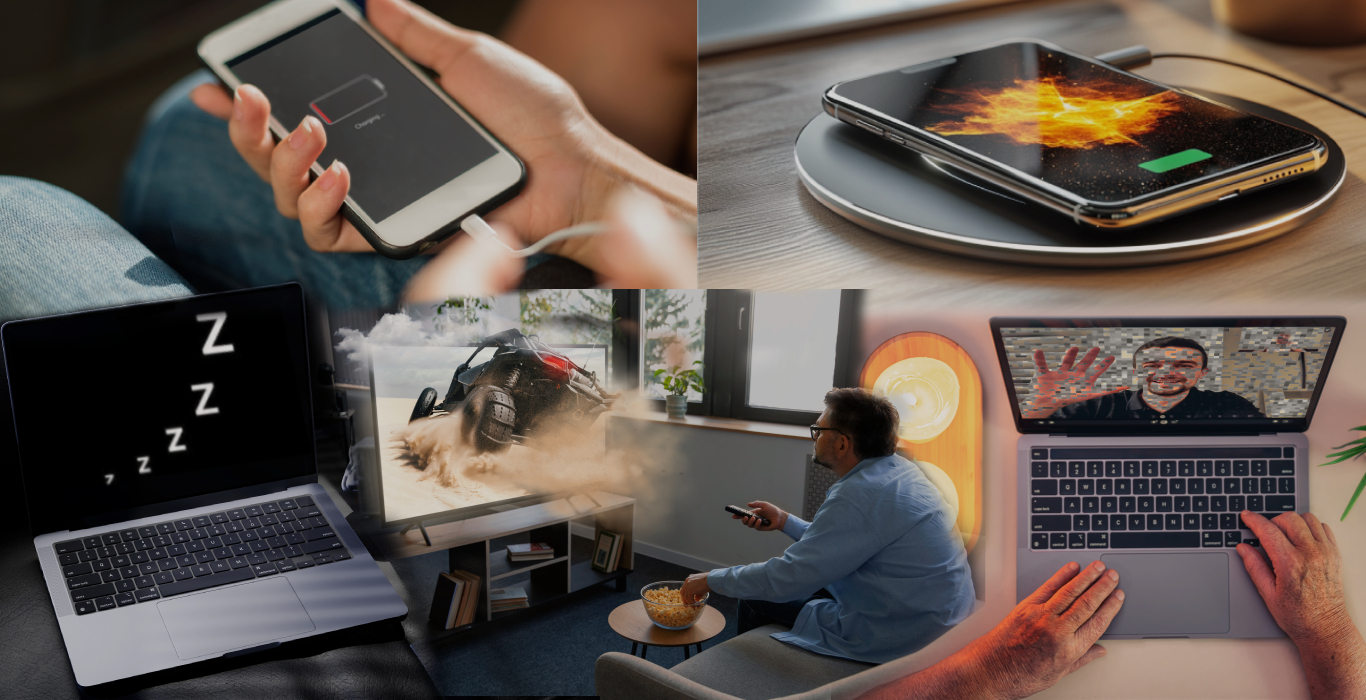Everyday Electronics, Explained Smartly
In a world wired with gadgets, we often use technology without really understanding how it works. This Innopedia brings you fresh, relatable content that decodes your everyday electronics, without any tech jargon or overwhelming science. From your phone’s battery percentage trickery to why your laptop freezes right before an important deadline, this series breaks down the quirks, myths, and hidden truths behind the devices we live with every single day.
Let us check the smart side of the gadgets you thought you already knew.
Ever noticed how your phone hits 100% after charging overnight and yet runs out faster than expected? That’s not your imagination. Most modern smartphones are built with lithium-ion batteries that fast-charge up to 80–90%, then slow down to a “trickle charge” to avoid overheating and extend battery health. That last 10% is more of a float than a fill. While overnight charging feels convenient, doing it regularly might reduce your battery’s lifespan in the long run.
We all have our own version of “battery panic mode”, dimming the screen, turning off Wi-Fi, enabling flight mode, or cutting off background apps. However, understanding how your battery works is the smartest hack of them all.
Speaking of power-saving, have you ever wondered what happens when you put your computer on “Sleep”? Contrary to popular belief, it does not fully shut down. Instead, it slips into a low-power state that still consumes about 5–10 watts per hour, roughly the same as leaving a small LED bulb on. Sleep Mode is great for short breaks, but not ideal if you are away for long hours. A proper shutdown not only conserves more energy but also gives your system a clean restart.
Now let’s talk about something most of us have felt, the warm charger. Ever unplugged your phone and thought, “Why is this so hot?” A little heat is perfectly normal. It’s just the result of power being transferred. But excessive heating, a burning smell, or discomfort while touching the charger could point to faulty cables, cheap adapters, or loose sockets. Using substandard charging accessories not only risks overheating but could potentially damage your phone or cause power issues at home.
Moreover, if you are planning to upgrade your home entertainment setup, here's something to keep in mind: bigger isn't always better when it comes to TVs. While a 75-inch display may look impressive, it might overwhelm a small room. The ideal viewing distance is about 1.5 times the screen’s diagonal size. That means if you have a 55-inch TV, the best place to sit is around 6.8 feet away. Sitting too close can cause eyestrain and make the viewing experience uncomfortable. Smart living is not just about buying high-tech gadgets it’s about setting them up in a way that fits your space and lifestyle.
Then there is that all-too-familiar frustration, your device freezing at the worst possible moment. A Zoom call, a presentation, a deadline and suddenly, your laptop hangs or your phone crashes. It is not bad luck, it’s low RAM, software glitches, overheating, or too many background apps causing your device to choke under pressure. Think of it as your tech having a mini anxiety attack. The good news? Restarting regularly, updating your software, and clearing clutter can keep your devices running smoothly.
We often live with our gadgets without ever truly understanding them. Once you understand how your electronics work, you start using them smarter by saving energy, extending their lifespan and avoiding unnecessary damage.
So next time your charger feels warm, or your laptop goes to “sleep,” you’ll know exactly what’s happening behind the scenes.
